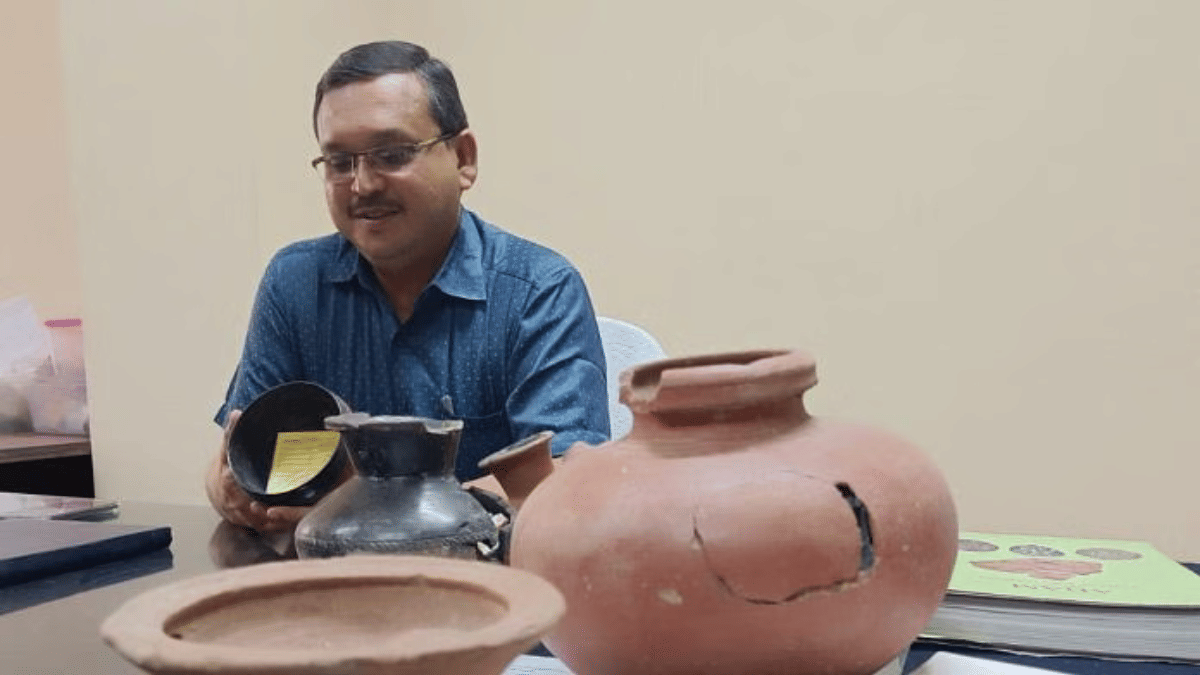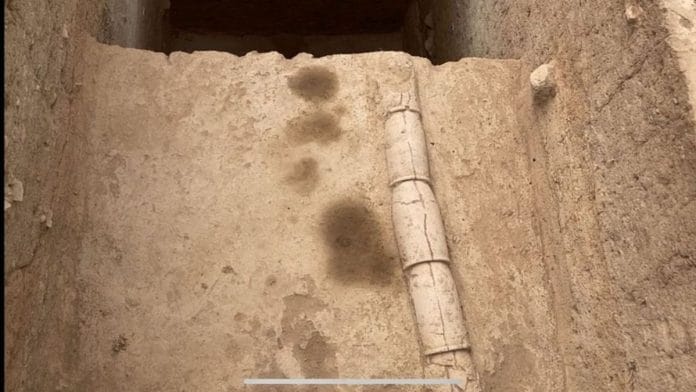Chennai: When archaeologist K. Amarnath Ramakrishna began excavating a coconut farm in Keezhadi—a quiet Tamil Nadu village—in 2014, little did he realise that his discovery of an urban civilisation dating back to at least the 8th century BCE wouldn’t just challenge history but also his career with five transfers in eight years.
K. Amarnath Ramakrishna submitted the report on the first two phases of the Keezhadi excavation in 2023. The Archaeological Survey of India (ASI) rejected his report and asked him to revise the dates of his findings, but he stood by his conclusions and wrote to the ASI that no corrections were necessary.
Ramakrishna was transferred a month later on 17 June.
Indologist R. Balakrishnan, a retired IAS and chairman of the International Institute of Tamil Studies, said the findings of the Keezhadi excavations were revolutionary because they complemented Sangam literature.
“Ramakrishna’s findings bolstered the narrative of an independent, sophisticated Tamil civilisation, distinct from the Vedic-centric history. There were no religious symbols found at the excavation site, proving what was told in Sangam literature,” Balakrishnan told ThePrint.
Amarnath Ramakrishna’s transfer in 2023 wasn’t his first or last. His groundbreaking work has often been accompanied by controversy, with his career at the ASI marked by 12 transfers in 21 years. He began in 2004 as an assistant archaeologist at Kondapur Museum in Andhra Pradesh.

The roots of the latest controversy go back to 2013-14, when Ramakrishna began surveying 293 potential sites in and around Madurai for excavation. Among them, Keezhadi, a 100-acre coconut grove in Palichanthai Thidal in Sivagangai district, stood out—and excavations began there in 2014.
In the first two phases between 2014-15 and 2015-16, the team unearthed over 7,500 artefacts, including brick structures, drainage systems, wells, pottery, beads and Tamil-Brahmi inscriptions.
But in 2017, as Keezhadi’s significance was becoming undeniable, Ramakrishna was abruptly transferred to the Guwahati Circle in Assam while he was waiting for funds to begin the third phase of excavations at Keezhadi.
Soon after Ramakrishna’s transfer in 2017, the ASI appointed P.S. Sriraman as Superintending Archaeologist for the third phase of the excavation.
In October 2017, on completing the third phase, Sriraman said that Keezhadi excavations had not yielded any significant discoveries—sparking controversy as his opinion sharply contradicted Ramakrishna’s earlier findings.
Again in 2019, Amarnath Ramakrishna was transferred to Goa as superintending archaeologist. He was back in Tamil Nadu as superintending archaeologist of the Chennai circle in 2021, when he wrote the Keezhadi report.
In the 982-page report, submitted by Ramakrishna in January 2023, he classified Keezhadi into three periods: Pre-Early Historic (8th century BCE to 5th century BCE), Mature Early Historic (5th century BCE to 1st century BCE), and Post-Early Historic (1st century BCE to 3rd century CE).
He submitted the report in January 2023 and was transferred to Delhi as Director (Archaeology) after that. One and a half years later, in September 2024, Amarnath Ramakrishna was moved again, this time as Director (Antiquity) of the National Mission on Monuments and Antiquities (NMMA) at the ASI headquarters in Delhi.
Within three months, Ramakrishna was shifted again to the role of director of excavation and exploration at the ASI headquarters. Another three months later, he was brought back to his previous post at the ASI headquarters in Delhi.
On 17 June, Amarnath Ramakrishna was transferred yet again to the role of director of NMMA at Noida, marking his third transfer in nine months and twelfth transfer overall.
This was described as a “punishment posting” for allegedly refusing to change the dates in his Keezhadi report. “The post he was transferred to was almost defunct for years. If this is not a punishment post, what else is?” said one of Ramakrishna’s colleagues.
But an ASI spokesperson told ThePrint that all his moves were routine administrative transfers and had nothing to do with Keezhadi.
Archaeologists who worked with Amarnath Ramakrishna at Keezhadi felt that more details might have been unearthed had he been allowed to lead the third phase of excavations.
“In the first two phases, excavation was done at the habitation site. But to substantiate and to get more clarity on whatever was found in the habitation site, excavations need to be done in a burial site close to it. Ramakrishna had sought permission to excavate a burial site close to it, and that’s when the transfer order came,” a source at the ASI told ThePrint.
Eye for detail
Archaeologists, who worked with Amarnath Ramakrishna at Keezhadi, recalled that he was a man with an eye for detail who looked for concrete scientific evidence before arriving at a conclusion.
“When we began the Keezhadi excavation, we seriously did not have any expectations, except that it was one of the largest human habitation sites that we were digging in Tamil Nadu. He was very keen on noting down everything that he saw at the site and everything that we excavated from day one,” said archaeologist Vasanth, who worked with Amarnath Ramakrishna during the Keezhadi excavation.
Vasanth also told ThePrint that Ramakrishna was an exceptional officer who did not give preferences to anyone based on seniority. “He listens to everybody’s ideas irrespective of their age and experience.”
A Madras University archaeology student, now working with the archaeology department, said he was lucky to do an internship at Keezhadi with Amarnath Ramakrishna.
“Because most of my seniors and even my colleagues who did internships were not even taken anywhere close to the excavation trenches. Despite being at the excavation site, they largely got only theoretical experience,” said the achaeologist, who did his internship with Ramakrishna between 2015 and 2017.
“But Ramakrishna sir took us into the trenches and explained how each quadrant is dug and how they pick the samples and what each one of them means,” he added.
Son of a Tamil Scholar, in search of ancient traces
Amarnath Ramakrishna, who belongs to Tamil Nadu’s Palani in Dindigul district, is the son of an academic couple, R. Krishnamoorthy and G.S. Dinamani. Krishnamoorthy retired as professor of zoology at Presidency College in Chennai and the late Dinamani worked as a professor of Tamil at Arulmigu Palaniandavar Women’s College.
“Beginning from elementary education to an M.Phil in Ancient History and Archaeology, he was a product of Tamil Nadu’s education system,” recalls a college mate and archaeologist with the state government.
Amarnath Ramakrishna’s friends and classmates credited their professor, K.V. Raman, for inspiring him to take archaeology seriously.
“He has always said that K.V. Raman sir was his inspiration. It was KV sir who asked Ramakrishna to pursue a two-year PG Diploma in Archaeology at the Institute of Archaeology run by the Archaeological Survey of India,” the collegemate told ThePrint.
He also questioned how the methods and procedures taught at ASI’s institute could be wrong. “He did not learn archaeology anywhere else. How can a person who studied at the ASI’s institute give a report without substantial evidence stipulated by the ASI?”
(Edited by Sugita Katyal)






